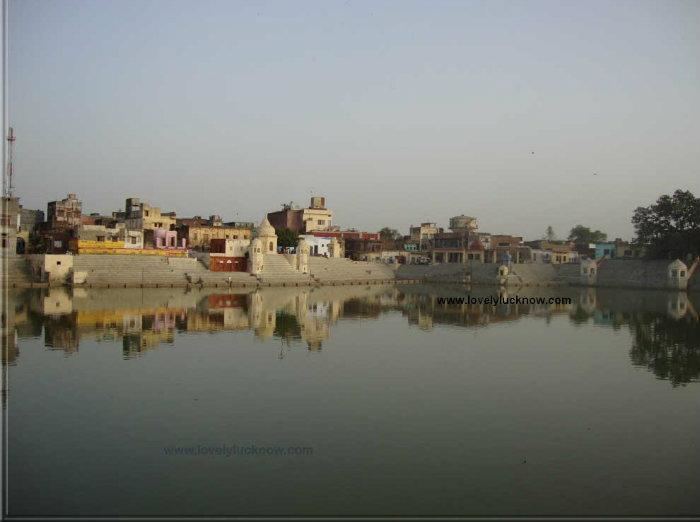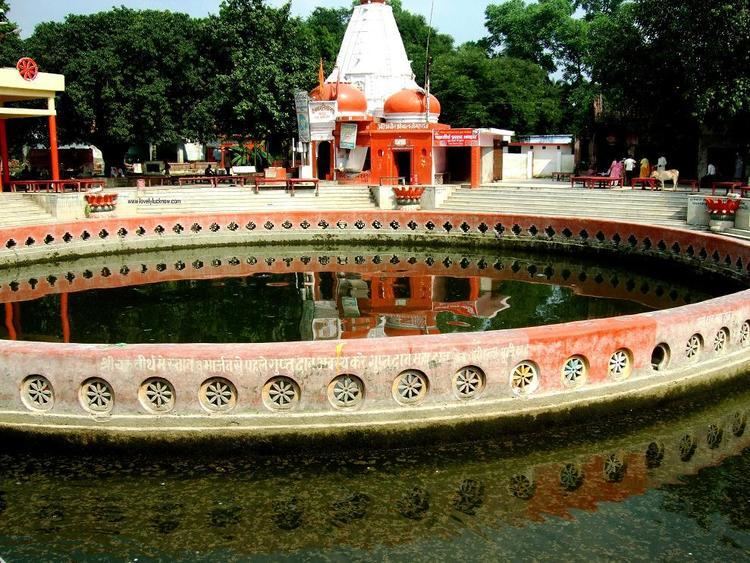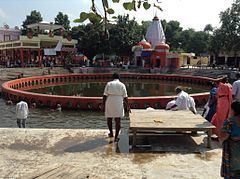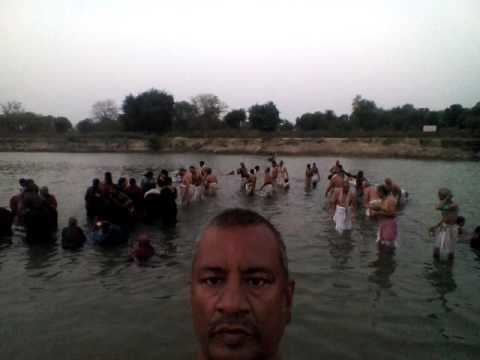Country India Location Naimisaranya Temple tank Chakra | State Uttar Pradesh Primary deity Deva Rajan
(Vishnu) | |
 | ||
Consort Pundarikavallai
(Lakshmi) Similar ThiruVaragunamangai Perumal Temple, Kazheesirama Vinnagaram, Thiruvellakkulam, Loganatha Perumal Temple, Thalai Sanga Nanmathiyam | ||
Naimisaranyam is a Hindu temple dedicated to Vishnu located in the north Indian state of Uttar Pradesh. It is one of the Divya Desams, the 108 temples of Vishnu revered in Nalayira Divya Prabandham by the 12 poet saints, or Alwars. The temple is believed to be of significant antiquity with contributions at different times from the ruling kings. The temple is counted as one of the eight temples of Vishnu that self-manifested and is classified as Swayamvyaktha Kshetra. The temple is open till 6pm. Hence plan your visit accordingly. The holy tank Chankra Kunda is associated with the temple and it is a pilgrimage centre where people take holy dip during festive occasion.
Contents

Legend

Sage Narada is believed to have searched for the best theertha (water body) in three worlds. He went to Kailasa, the abode of Shiva, then to Parkadal, the abode of Vishnu and finally landed in the water body in the Naimisha Forest. The central deity is also believed to be worshipped by sudharma and devas (celestical deities).

Indra, the king of the devas, was once driven out of devaloka by an asura named Vritra. The asura was the recipient of a boon whereby he could not be killed by any weapon that was known till the date of his receiving the boon and additionally that no weapon made of wood or metal could harm him. Indra, who lost all hope of recovering his kingdom went to seek the aid of Vishnu. Vishnu revealed to Indra that only the weapon made from the bones of the sage Dadhichi would defeat Vritra. Indra and the other devas therefore approached the sage, whom Indra had once beheaded, and asked him for his aid in defeating Vritra. Dadhichi acceded to the devas' request but said that he wished that he had time to go on a pilgrimage to all the holy rivers before he gave up his life for them. Indra then brought together all the waters of the holy rivers to Naimisaranya, thereby allowing the sage to have his wish fulfilled without a further loss of time. Dadhichi is then said to have given up his life by the art of yoga after which the devas fashioned the Vajrayudha from his spine. This weapon was then used to defeat the asura, allowing Indra to reclaim his place as the king of devaloka.

As per another legend, when sages were looking out to perform penance, Brahma, the god of creation, brought out a ring from darba grass. He asked the sages to perform penance at the place where the ring falls, which is believed to be Naimisaranya. The sages performed penance and at the end of it, Vishnu appeared to the sages and accepted their offerings. It is believed that the forest still has Vishnu and all sages as trees.
The temple

Naimisaranyam is located at the junction of the roads from Sitapur and Khairabad, 32 km from Sitapur and 42 km from the Sandila railway station, 45 miles north of Lucknow in Uttar Pradesh. Naimisaranya is also known as Nimsar or Nimkhar and is located on the left bank of the river Gomati. The sacred well, namely Chakra Kunda is believed to have started from the weapon of Vishnu, Chakra. There are shrines dedicated to Chakranarayana, Ganesh, Rama, Lakshman.
Religious significance

This place has also been visited by Sankaracharya and the famous poet, Surdas resided here. Suthar, the author of 18 puranas is believed to have lived here and presented his sayings to the sages. The central deity is believed to have presided over the forest and hence the puja (rituals) are done to the forest.
The temple is counted as one of the eight temples of Vishnu that self-manifested and is classified as Swayamvyaktha Kshetra. This temple is revered in Nalayira Divya Prabandham, the 7th–9th century Vaishnava canon, by Thirumangai Azhwar in ten hymns. The temple is classified as a divyadesam, the 108 Vishnu temples that are reverred in the Vaishnava canon.
Every new moon day, a large number of people purify themselves with a dip in the holy well. If the new moon falls on a Monday, it is believed that a holy bath in the well and offering to the presiding deity Lalitha will wash away all the sins committed in lifetime.
The temple is considered one of the eight Sywayambu Kshetras of Vishnu where presiding deity is believed to have manifested on its own. Seven other temples in the line are Srirangam Ranganathaswamy temple, Bhu Varaha Swamy temple, Tirumala Venkateswara Temple, and Vanamamalai Perumal Temple in South India and Saligrama, Pushkar and Badrinath Temple in North India.
